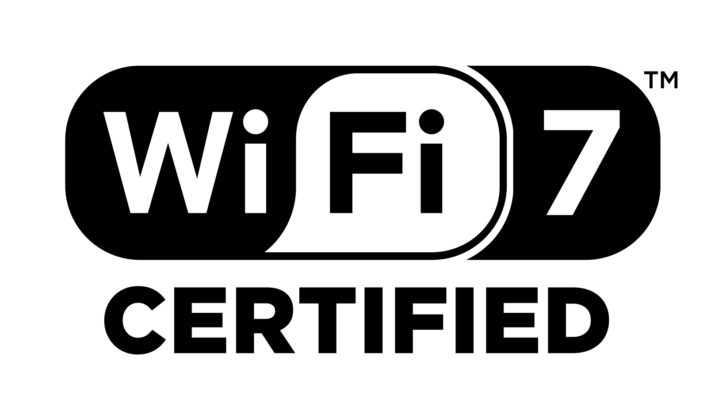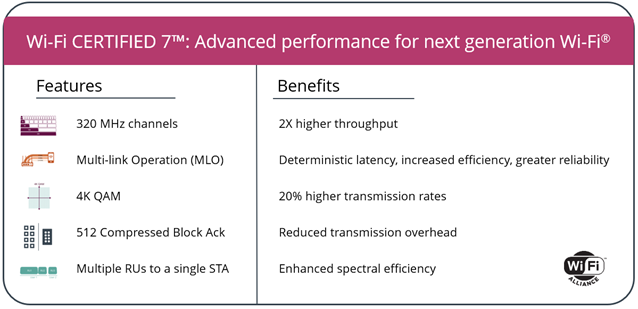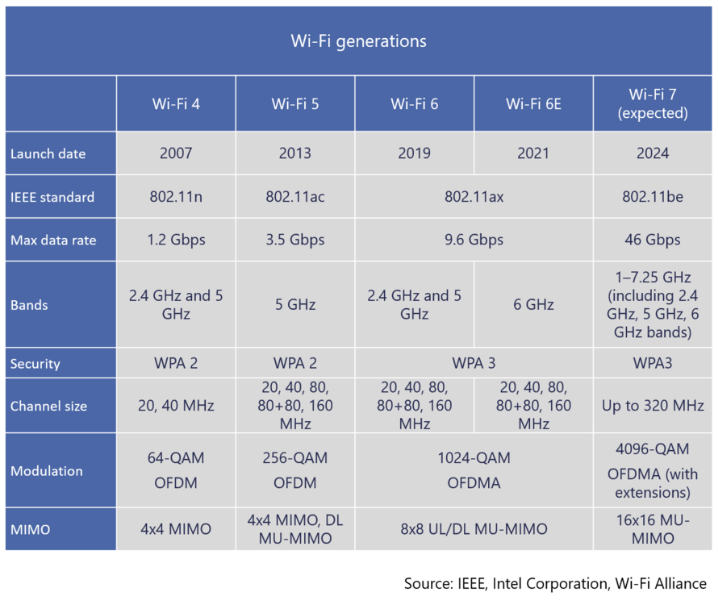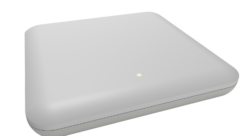
The Wi-Fi Alliance has announced that they have begun clearing products as Wi-Fi 7 Certified, stating that this certification will become more and more essential with the growth of new use cases, such as multi-user AR/VR/XR, and immersive 3-D training.
In a conversation with The Verge, Wi-Fi Alliance CEO Kevin Robinson called Wi-Fi 7 the “first generation built from the ground up” for the 6GHz band of wireless spectrum.

According to the Wi-Fi Alliance, advanced features of Wi-Fi 7 certification include:
- 320 MHz channels: available in countries that make the 6 GHz band available to
Wi-Fi, ultra-wide channels double today’s widest channel size to facilitate multigigabit device speeds and high throughput - Multi-Link Operation (MLO): allows devices to transmit and receive data simultaneously over multiple links for increased throughput, reduced latency, and improved reliability
- 4K QAM: achieves 20% higher transmission rates than 1024 QAM
- 512 Compressed block-ack: improves efficiency and reduces overhead
- Multiple RUs to a single STA: improves flexibility for spectrum resource scheduling to enhance spectrum efficiency
- Triggered Uplink Access: optimizes Wi-Fi 6 defined triggered uplink access to accommodate latency sensitive streams and satisfy QoS requirements
- Emergency Preparedness Communication Services (EPCS): provides a seamless National Security & Emergency Preparedness (NSEP) service experience to users while maintaining the priority and quality of service in Wi-Fi access networks
The following was originally published December 18, 2023:

It’s been 5 years since the initial launch of the Wi-Fi 6 standard, and now the release date of the next Wi-Fi amendment has been set, bringing with it lower latency and hopefully, enhanced reliability.
In a statement to Tom’s Hardware, the the Wi-Fi Alliance has confirmed the launch date of Wi-Fi 7:
“Wi-Fi Certified 7, based on IEEE 802.11be technology, will be available before the end of Q1 2024. Wi-Fi 7 devices are entering the market today, and Wi-Fi Certified 7 will facilitate worldwide interoperability and bring advanced Wi-Fi performance to the next era of connected devices.”

Intel introduces Thunderbolt 5, tripling top speeds of Thunderbolt 4
As reported by flatpanelshd last year, W-Fi 7 utilizes Multi-Link Operation (MLO) technology in order to keep connections more stable while also ensuring latency is reduced to under 5 ms. Official word from the Wi-Fi Alliance states that the upcoming standard will allow a maximum speed of between 30 and 40 Gbps.









